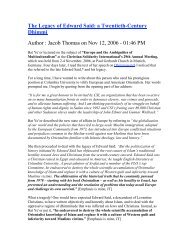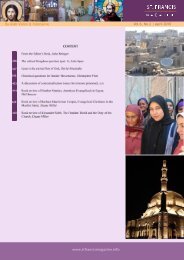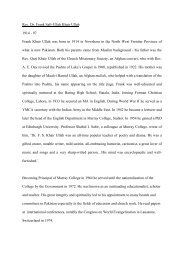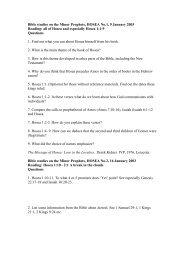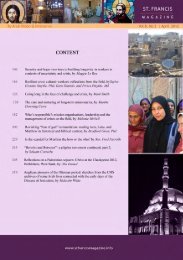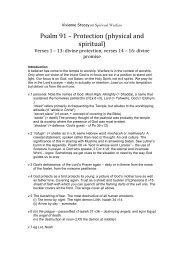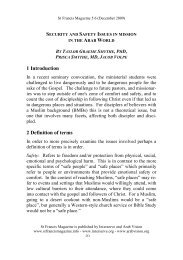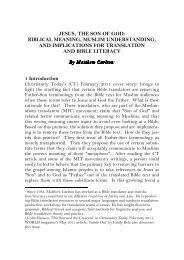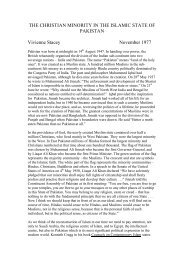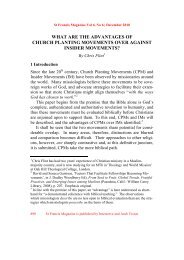download the pdf - St.Francis Magazine
download the pdf - St.Francis Magazine
download the pdf - St.Francis Magazine
Create successful ePaper yourself
Turn your PDF publications into a flip-book with our unique Google optimized e-Paper software.
<strong>St</strong> <strong>Francis</strong> <strong>Magazine</strong> Vol 8, No 4 | August 2012<br />
Increasingly, such claims came under closer scrutiny and sustained<br />
criticism. Smith (2009: 23-26; 43-44) saw <strong>the</strong>m as lacking<br />
any consideration of <strong>the</strong> Christocentric reworking of believers’ identity<br />
in passages such as Mat<strong>the</strong>w 12:46-50 and as making an a priori<br />
rejection of extraction despite biblical evidence to <strong>the</strong> contrary (cf.<br />
Mark 8:34-38 and 1 Corinthians 6:14-18). 29 This was just one part<br />
of Smith’s wide-ranging and strident critique of C5 ministries, reflective<br />
of his own long-held views on how Christians should engage<br />
with Islam (cf. Smith 1998). Conversely, <strong>the</strong> pragmatic assertion<br />
of oikos strategies was continued by Gray et al. (2010: 94). They<br />
commended seeking to reach “whole networks intact” via people of<br />
local influence and, following Patterson and Scoggins (2002: 102)<br />
‘men and women of peace’, a term drawn from Luke 10:3-7 (cf. also<br />
Lewis and Lewis 2009a, 2009b; Lewis 2010).<br />
Ano<strong>the</strong>r area of debate which intensified concerned <strong>the</strong> use or<br />
non-use of traditional ‘Christian’ language and terminology. Hoefer<br />
(2008: 29), for example, seeing ‘Christian’, ‘Christianity’, ‘church’,<br />
‘baptism’ and ‘conversion’ as conveying <strong>the</strong> taxing legacy of past<br />
baggage from which people should be released, urged a rethinking<br />
of “<strong>the</strong> burdensome and confusing terminology with which <strong>the</strong><br />
Good news has been wrapped. Once we take off <strong>the</strong>se distracting<br />
and confusing wrappings, <strong>the</strong> beauty of <strong>the</strong> pure Gospel can be seen<br />
and enjoyed and considered by all.” Yet this risks reifying an abstract,<br />
even Gnostic, ‘pure Gospel’. For critics such as Smith (2009:<br />
41), this is to be rejected as bypassing Christianity and leading towards<br />
a false hybrid, ‘Chrislam,’ which is nei<strong>the</strong>r au<strong>the</strong>ntic Islam<br />
nor real Christianity (cf., similarly, Span 2009c: 132-133). At <strong>the</strong><br />
same time, however, Winter (2008: 671) is correct to warn against<br />
being more tolerant of deficient <strong>the</strong>ological understanding among<br />
29 Smith (2009) does not list <strong>the</strong> passages paralleling <strong>the</strong>se Gospel texts. For<br />
example, Mat<strong>the</strong>w 12:46-50 has synoptic parallels in Mark 3:19b-21, 31-35 and<br />
Luke 8:19-21 (cf. also John 15:14) and Mark 8:34-35 finds Lukan parallels in Luke<br />
9:23-24 (with <strong>the</strong> intensifying Lukan insertion of ‘daily’ in v.23); 14:25-27; and<br />
17:33. Such parallels suggest a widespread influence of such teaching within early<br />
Christian discipleship.<br />
<strong>St</strong> <strong>Francis</strong> <strong>Magazine</strong> is a publication of Interserve and Arab Vision 479




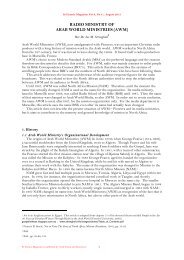
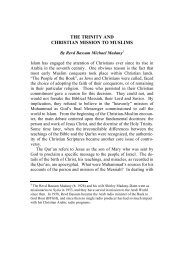
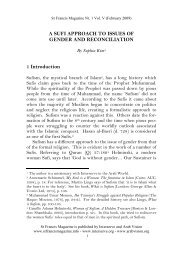
![Reflections on Surah Fatiha and the Lord's Prayer[1] - St.Francis ...](https://img.yumpu.com/49377951/1/184x260/reflections-on-surah-fatiha-and-the-lords-prayer1-stfrancis-.jpg?quality=85)
